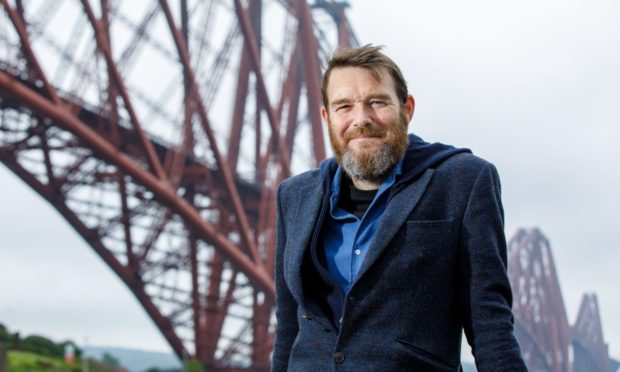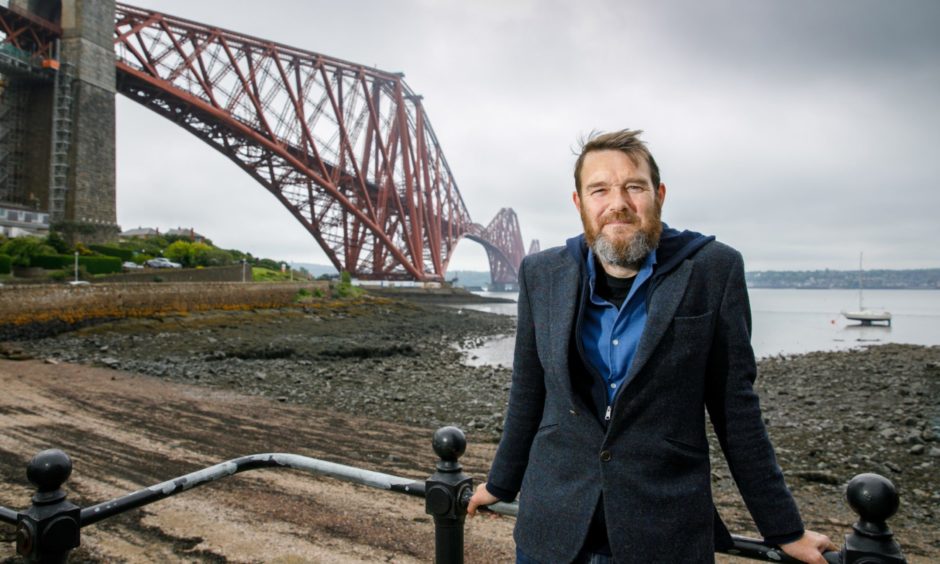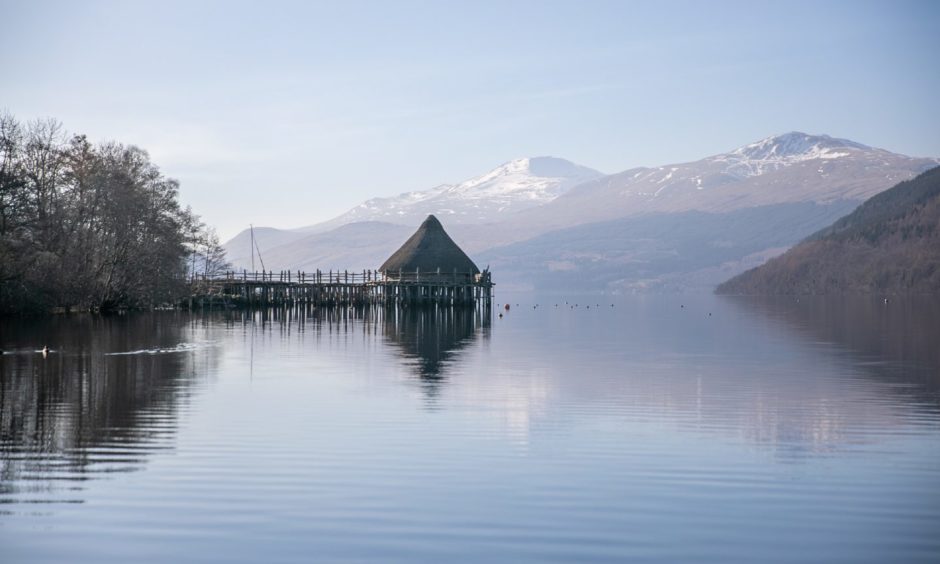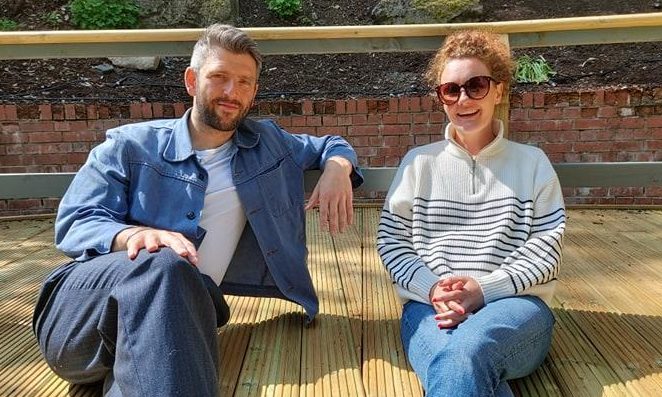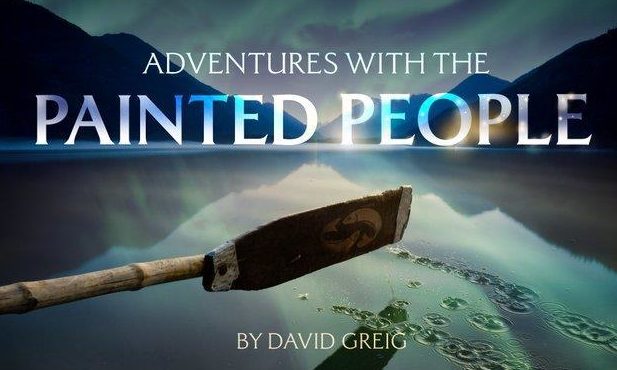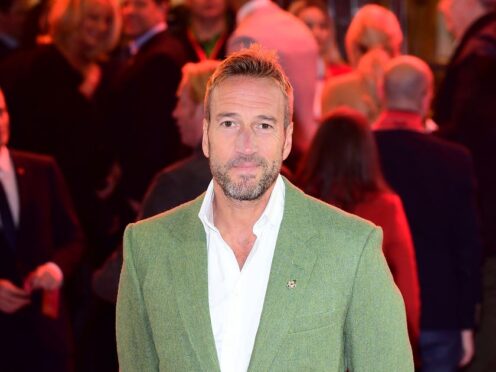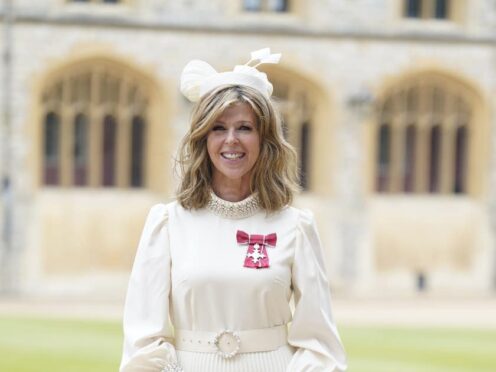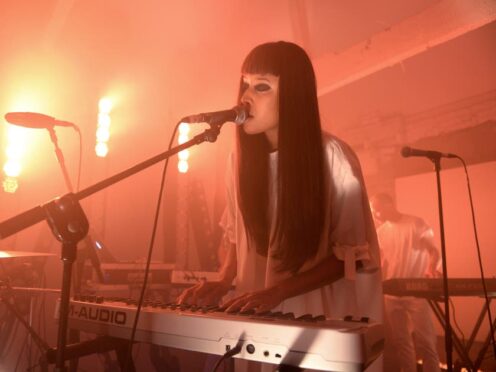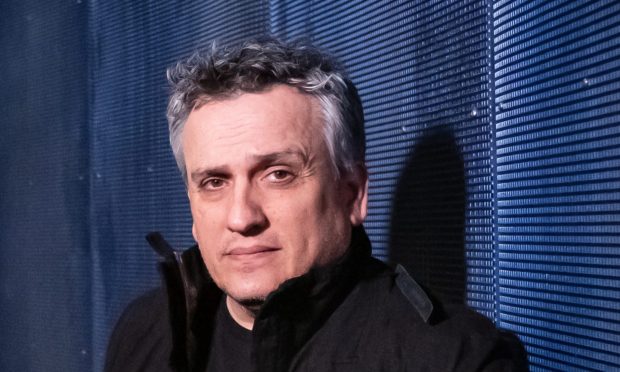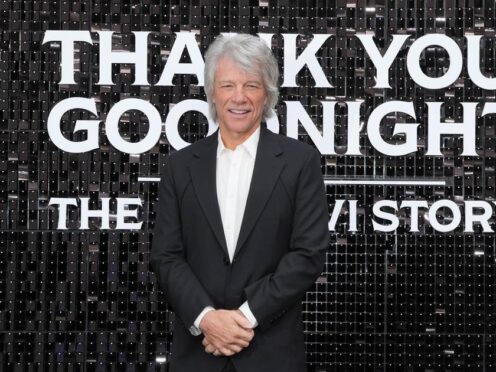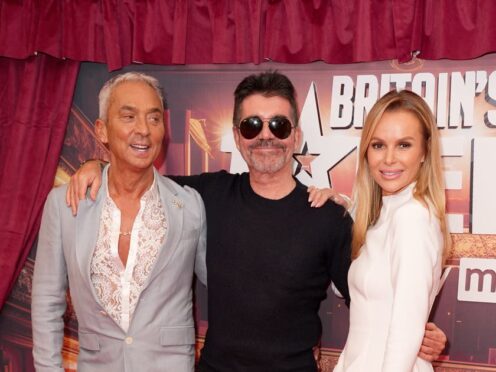If Fife-based playwright David Greig hadn’t made his living as a dramatist, he may well have become an archaeologist – or even the owner of a hipster-style outdoors shop in Highland Perthshire.
Fascinated by the past, his new work Adventures with the Painted People is set some 2,000 years ago near Kenmore, harking back to the days when the Romans occupied Caledonia.
And fittingly for a play on the subject of the Roman Empire, it will be the first production staged in Pitlochry Festival Theatre’s new open-air amphitheatre when it premieres on June 10.
David smiles: “There’s a line in the play where they imagine what the future might be, and Lucius says: ‘down by the banks of the river we might have an amphitheatre and they’ll put plays on, and they’ll drink wine and eat olives’.
“And because the pandemic has continued, Elizabeth Newman has had to build an amphitheatre. So this is a play that has conjured up its own performance space.”
David, 52, who lives in North Queensferry, is a prolific playwright, artistic director of the Royal Lyceum Theatre in Edinburgh and an “adopted Fifer”. When he’s not dreaming up characters on the page, he can probably be found doing some hill-running.
‘Obsessed’
“I’m really interested in the earlier history of Scotland. Whether you find me at a stone circle or a hill fort – I’m a bit obsessed with them – or crannogs or brochs.
“The hill-running got me into hill forts and the hill forts got me into Scotland and the Romans, so I suppose maybe there’s a world in which I might have been an archaeologist.”
He ponders for a moment: “But, whenever I think that, I also think: it’s just so fiddly!”
And while David is in awe of the endless information an archaeologist could tell you about a civilisation just because of a tiny amber bead unearthed during a dig, he has always been more interested in the stories behind such artefacts.
Mushrooms and maps
“What I immediately do is say: ‘who owned that bead – and what was it like? Was it a necklace? And was it a necklace on a kid, on a girl, on a boy? Was the girl the daughter of a king … or a ploughman? And what did they say, and what was it like when they woke up on Tuesday morning and they looked out over the haar going up the valley?’
“In the end, I can’t escape that my interest in this is imagining stories. The truth is, if I wasn’t a playwright I might be able to open a little outdoors shop. It probably wouldn’t make much money – maybe somewhere like Aberfeldy – with a slightly hipster flavour. It would have some books about foraging for mushrooms, good OS maps and books about stone circles.
“But it’s probably just as well I am a playwright because I’m not sure the world needs a Greig’s of Aberfeldy.”
Adventures with the Painted People was commissioned by Pitlochry Festival Theatre artistic director Elizabeth Newman. It forms part of the theatre’s Shades of Tay project to create over 50 pieces of new art inspired by the river and its landscape.
Finally on the stage
Due to the pandemic, David reimagined the work as a radio play starring Olivier Huband and Kirsty Stuart, produced for BBC Radio 3 and broadcast last summer.
Finally, it will have its chance to be performed live, with Kirsty Stuart reprising her role alongside Nicholas Karimi, and Newman directing.
Part of what the play is doing is exploring the tension and the dialogue between civilisation and culture”
Adventures with the Painted People tells the story of wise Pictish witch Eithne and Roman officer Lucius, who finds himself isolated in Caledonia at a key moment in the history of Scotland.
“You could argue that the existence of Scotland as a country and a huge chunk in our history was dependent on a slip of a pen in Rome in AD 80. I was interested in that story,” David explains.
“This soldier doesn’t really want to be there – he’s more interested in being a writer. He finds himself kidnapped by the woman who leads a small branch of a small tribe of the Caledonians. She has decided that you don’t fight the Roman Empire … so she needs to find a way of living with them. It becomes a story where each is teaching the other.”
Local Hero
Playful and pleasantly meandering with a healthy dose of humour, this two-hander still broaches important themes. Yet it’s a far cry from some of the huge West End theatre adaptations David has been involved with in recent years.
He has worked on productions such as Charlie and the Chocolate Factory, The Lorax, Touching the Void and, most recently, Local Hero.
But the relationship between David’s Caledonian and his Roman speaks of more than just history. As Eithne and Lucius discover more about each other’s cultures, she advises: “The world’s not straight – it wiggles.”
David says: “There is a dialogue constantly in the world between things about straight lines: organisations, roads, power, armies – and things about ‘wiggles’ like relationships, the human heart, hills. Part of what the play is doing is exploring the tension and the dialogue between civilisation and culture.
“At the time I was writing this, Brexit was going on and there are some interesting similarities between what the European Union means to people in Britain – in both a good and bad way – and what Romanisation meant, in good and bad ways.
“I wanted to reflect this constant dance between so-called civilisation and so-called culture. I hope that reflection is of interest in lots of different ways.”
‘Hopeful’
When it comes to the state of the arts, David is among a number of high-profile theatre representatives urging the Scottish Government to review the social distancing requirements set to be in place when venues finally reopen.
Scottish performance arts venues believe they can operate safely with one-metre distancing. David was part of a recent round table with new culture secretary Angus Robertson to discuss the challenges ahead.
He says: “Our message to the government is very simple: we want to be safe, open as soon as it’s viable, but you are going to need to support us a bit longer … so we can begin to take the risk on opening.
“We are all hopeful that by autumn we might well be able to open without social distancing – but we can’t say that for a fact. For us to prepare work to be ready for then is a financial gamble and we can’t take that when we’ve got no money.
“All we want to do is get back to audiences. As soon as we can, I think – very swiftly – everything will start to make sense again.”
Adventures with the Painted People runs at Pitlochry Festival Theatre from June 10 to July 4. Find out more here.
Today we welcomed our first audience back to Pitlochry Festival Theatre since March 2020. It was a truly moving & uplifting experience. Thank you to the amazing audience. We have missed you so much. Thank you for the extraordinary @PITLOCHRYft Team – we did it!! 1/2 pic.twitter.com/Ptnr8cViQc
— Elizabeth Newman (@NewmanEJ) June 3, 2021
